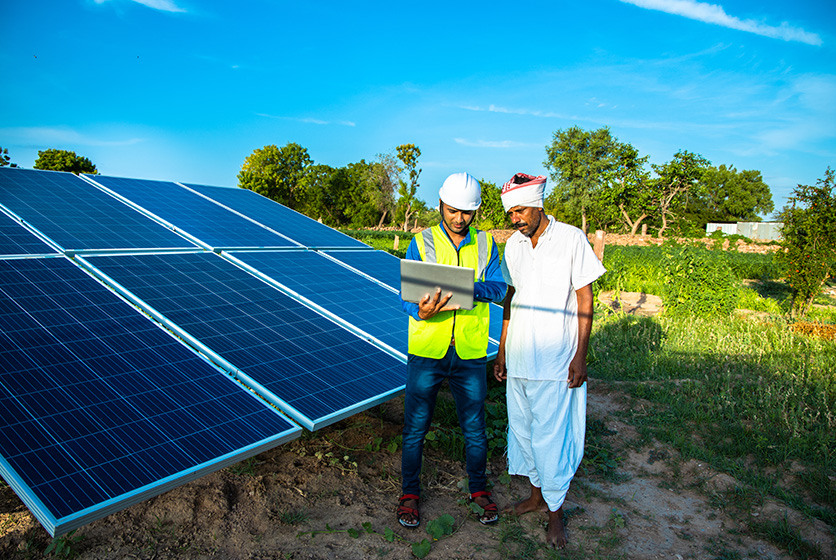Agrivoltaics In India
India, sprawled over 3.28 million km², is the seventh largest country in the world. Our country ranks second largest in the world when it comes to arable land - 394.6 million acres of it. Even with this large area of available land, it is imperative to carefully plan land use and resource development. Yes, nearly 60% of India’s land is farmland but considering the following trends and factors, it is also vital to plan for the future:
-
Growing population
-
Climate change
-
Shrinking resources – water scarcity, soil erosion etc
-
Urbanisation and
-
Infrastructure development
Farmers have been turning to modern technology, and new practices to manage their lands in a more optimised manner. Sustainable land use management, and eco-friendly methods are certainly the need of the hour. And one such emerging trend is agrivoltaics.
What is agrivoltaics?
Simply put, agrivoltaics is a method where crops share space with solar panels. This is also known as agrophotovoltaics, or dual use solar, since the land is used to grow crops and for solar panel installations. Depending on factors such as geographical aspects, types of crops, and climatic factors of a location, the solar panels can be deployed by:
-
Placing them in between crops
-
Putting them on stilts above crops and
-
Installing them as greenhouse solar buildings
Few of the benefits of agrivoltaics include greater yield, lower consumption of water, additional source of income for farmers, and a shared sense of value for land usage. Countries such as Kenya, South Korea, Germany, Japan, Italy, and France are doing lots of work in this sphere. Agrivoltaics in India is an emerging space and there are lots of interesting things happening here too.
Why invest in agrivoltaics?
According to the India Energy Outlook Report 2021, energy demand is set to increase 50% by the year 2030. India has also set a target of 450 GW of renewable energy for 2030. Considering that India has almost 60.4% of land under agricultural use, it makes sense to think of dual use of the same. Both solar power and crops can address energy concerns & food security.

Places such as Sitapur & Jodhpur in Rajasthan, Jamnagar in Gujarat, and Tandur in Telangana are just a few that are doing significant work in agrivoltaics. Combining agriculture with photovoltaic plants or agriPV is full of potential in India. According to Dr Priyabrata Santra, Principal Scientist at Indian Council of Agriculture Research (ICAR)-Central Arid Zone Research Institute, Jodhpur, “India needs to combine two important missions of the country – the Food Security and Solar mission by applying agrivoltaics to multiply land productivity.”
The need of the hour is to develop a sustainable and practical working model. Such a model may entail the involvement of farmer producer organisations. It may also involve leasing land from farmers. One instance of the latter model is the Pavagada Solar Park in Tumkur, Karnataka. But it will have to expand to grow crops as well.
There is also the need to make the farmers aware of the benefits of this new ‘method’ of farming. Stakeholders from agriculture, power, solar power, and research institutions must come together to make relevant, and sustained progress.
#InterestingInfo
-
Agrivoltaics was conceptualised first by Adolf Goetzberger, and Armin Zastrow in 1981.



